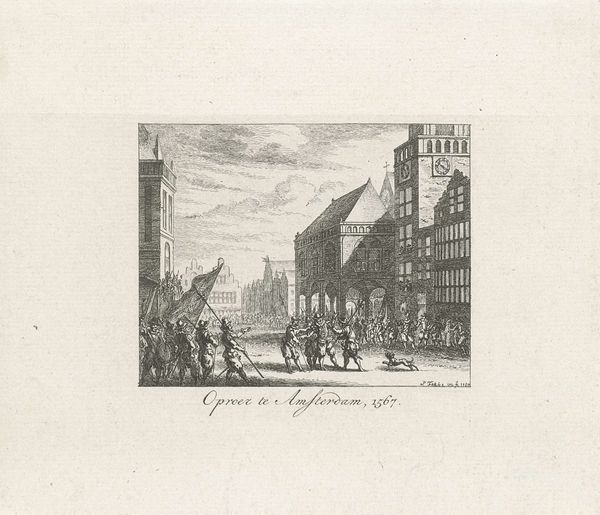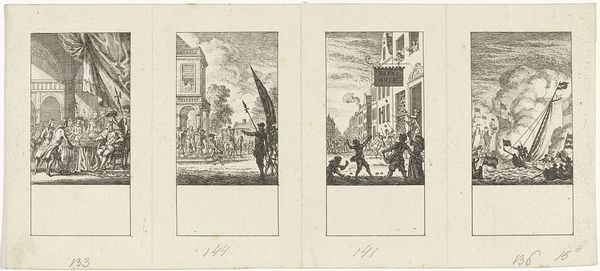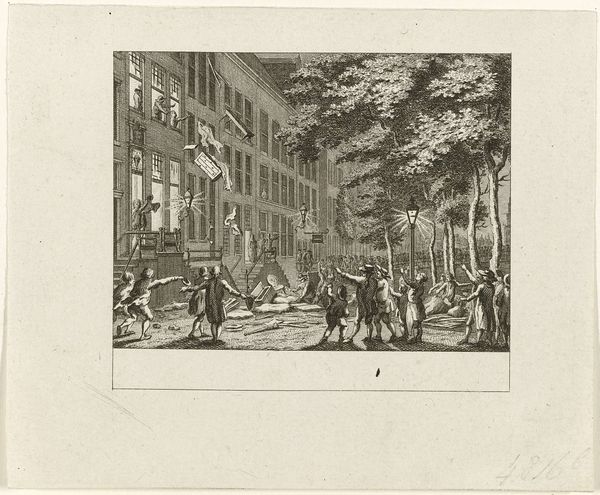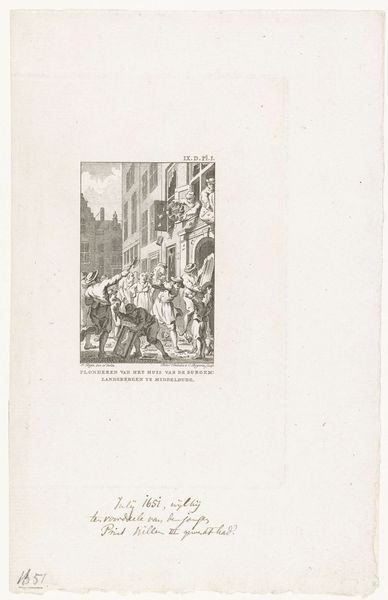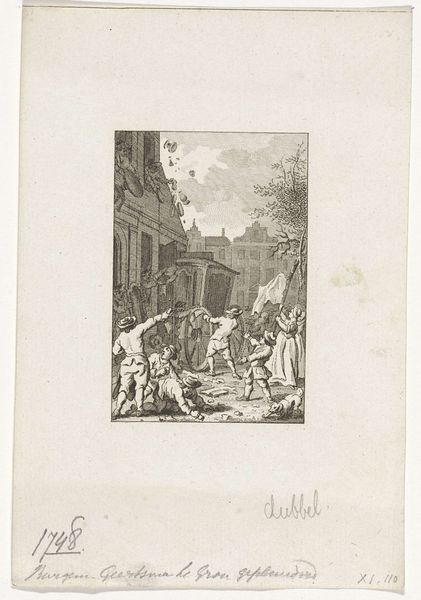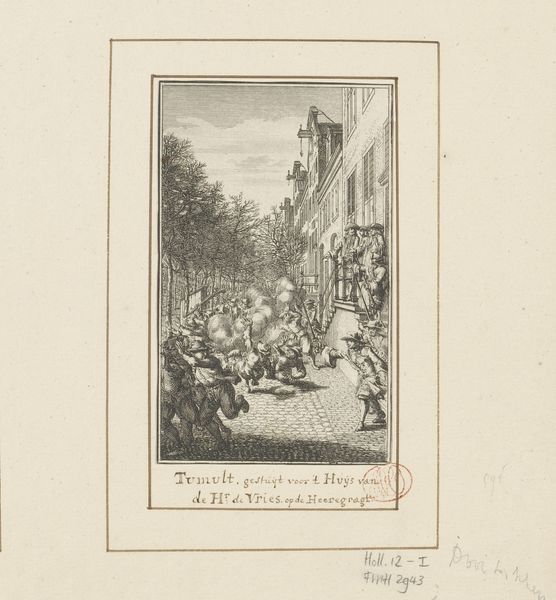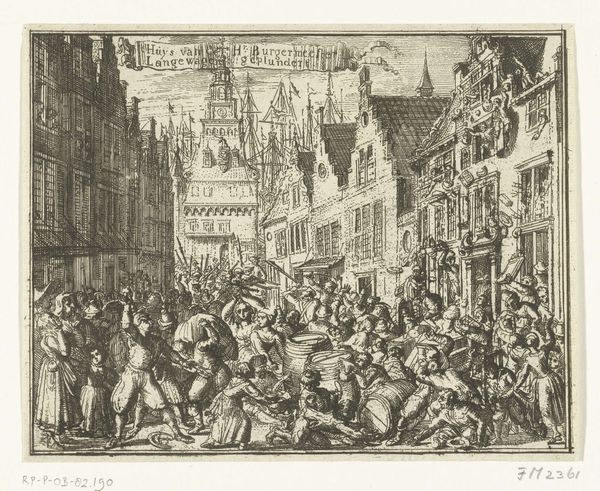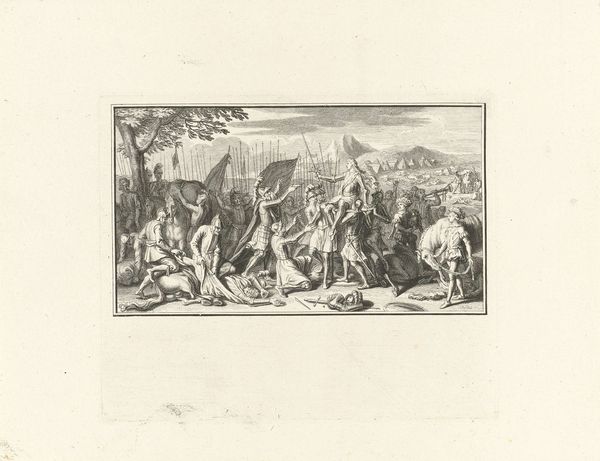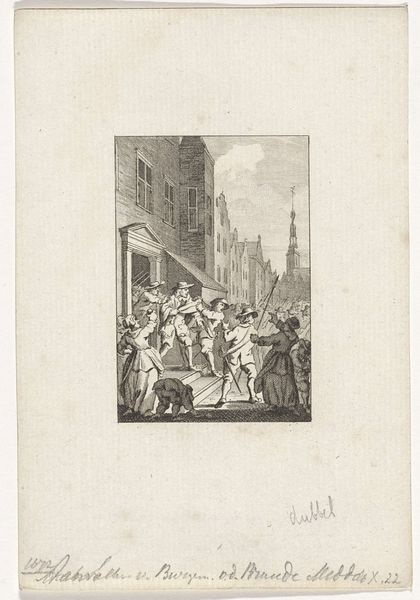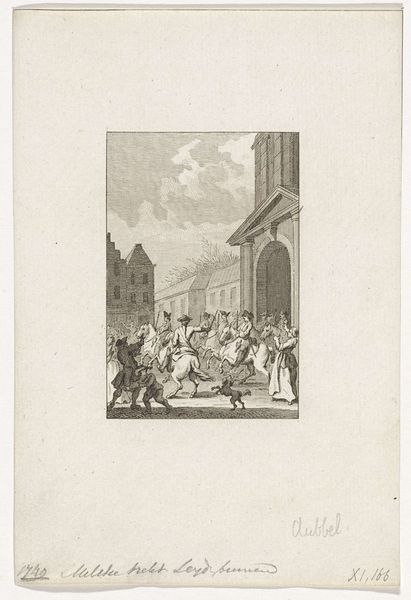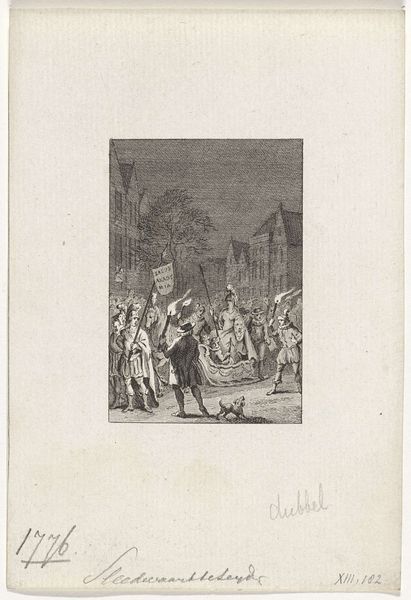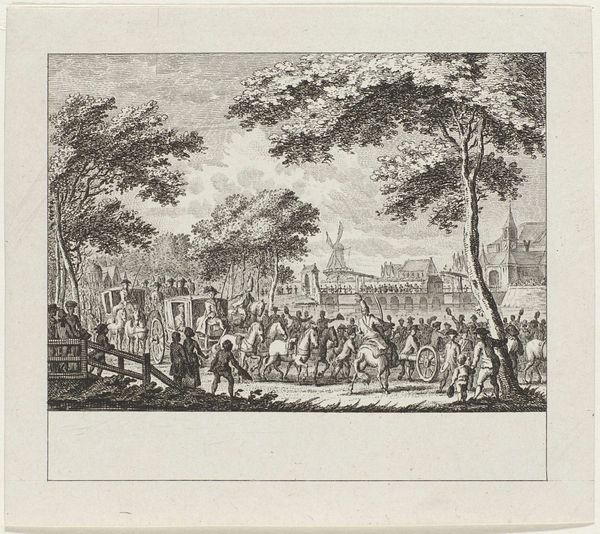
print, engraving
#
dutch-golden-age
# print
#
cityscape
#
genre-painting
#
history-painting
#
engraving
Dimensions: height 124 mm, width 144 mm
Copyright: Rijks Museum: Open Domain
Editor: This print, "Opstootje voor het huis van admiraal De Ruyter, 1672," created by Simon Fokke in 1782, captures a scene brimming with tension. It feels incredibly detailed, and yet removed, distanced by its medium of engraving. How would you interpret the material's effect on our understanding of the event depicted? Curator: It's critical to remember the *making* of this print, a full century after the event it portrays. Engraving, a reproductive medium, allows for widespread dissemination, but also demands skilled labor and capital investment. Consider: what does it mean for an event like this to be mass-produced and consumed as a historical image? Who controlled that narrative, and for what purposes? The lines, the textures…all are consequences of choices made in production, aren't they? Editor: So, the act of creating the engraving becomes as important as the event itself? Curator: Absolutely. We must examine the material conditions of production: the engraver's skill, the publisher's motives, and the audience’s desire for such imagery. This "history painting" exists as a *product*, mediated by various forms of labor and consumption. Does that change your initial reading of the tension in the image? Editor: I suppose it does. Thinking about it as a commodity makes me wonder who this was *for* and what perspective is privileged by its production. Curator: Precisely. What sort of social narrative about the past might this print have served in 1782? Perhaps even legitimized existing class structures by telling tales about disruption during war with competing empires. Editor: This makes me realize how easily we can accept a piece of art as objective truth when, in reality, it's loaded with social context and choices made during its creation. Thank you! Curator: Likewise! It is imperative that all see the connection between labor, materials, and the stories we tell ourselves about our histories.
Comments
No comments
Be the first to comment and join the conversation on the ultimate creative platform.
